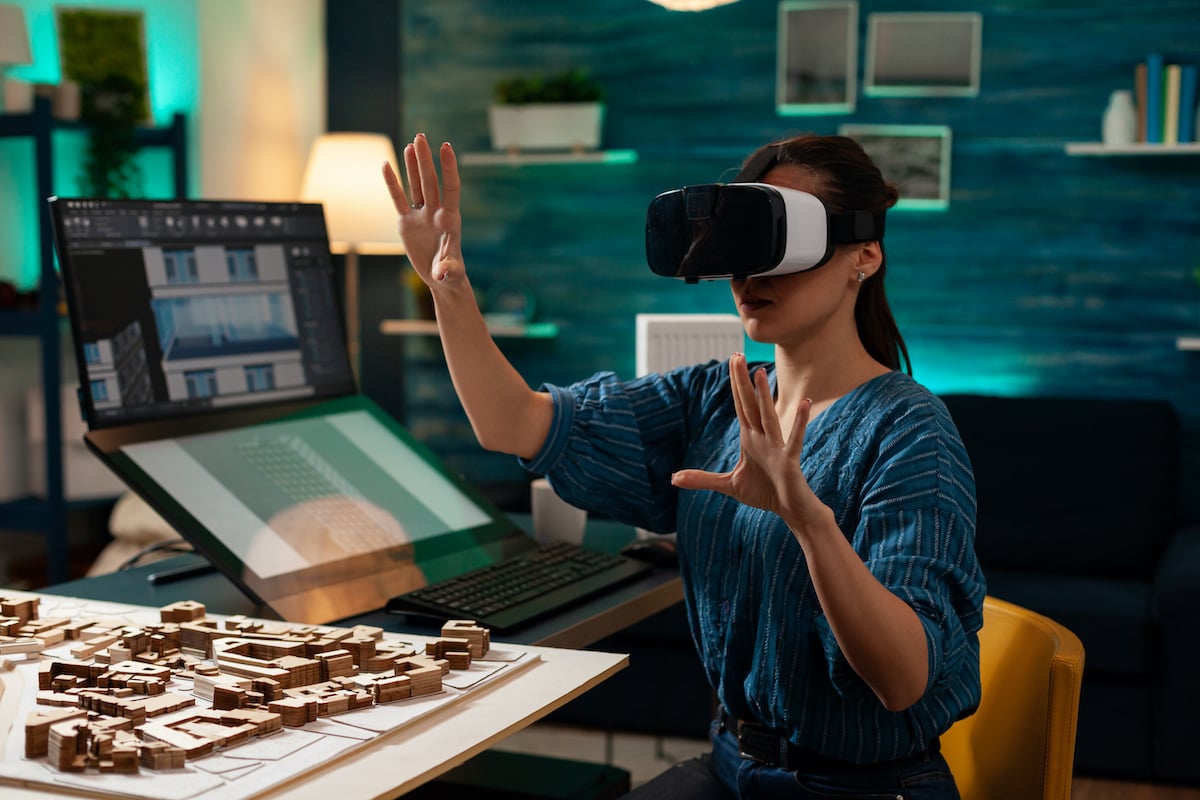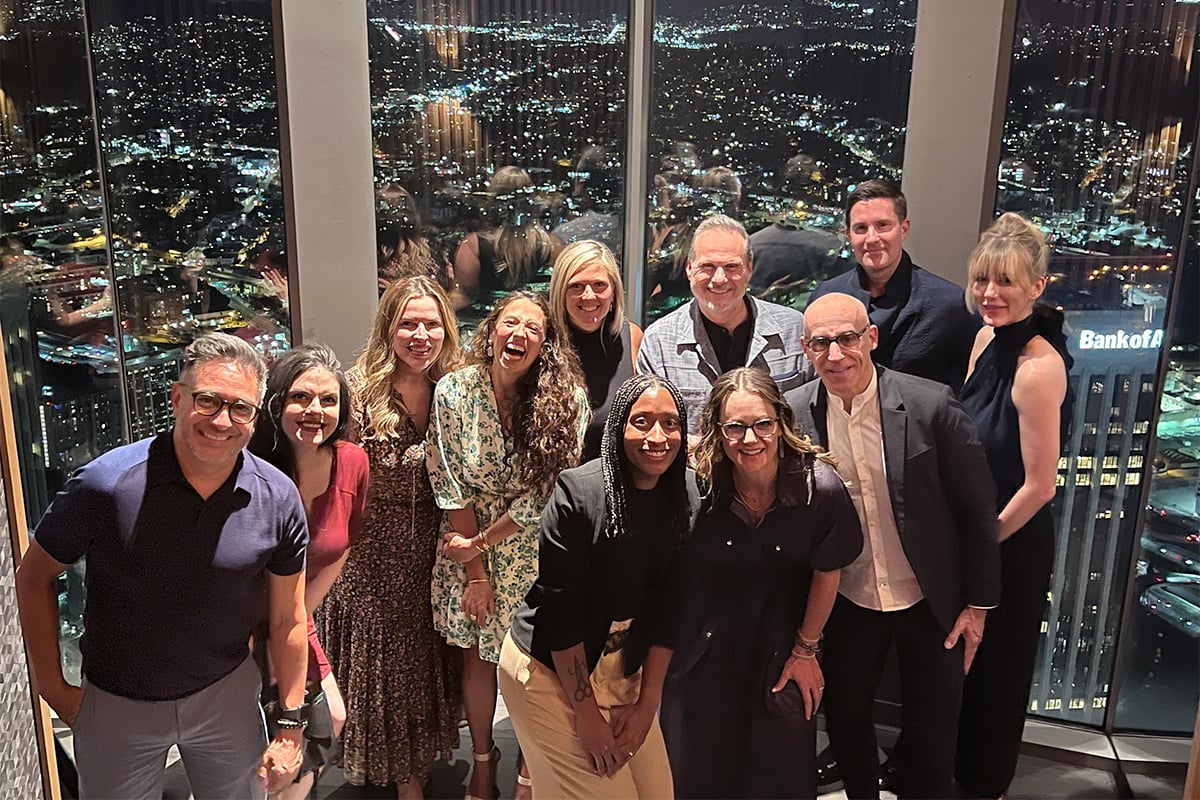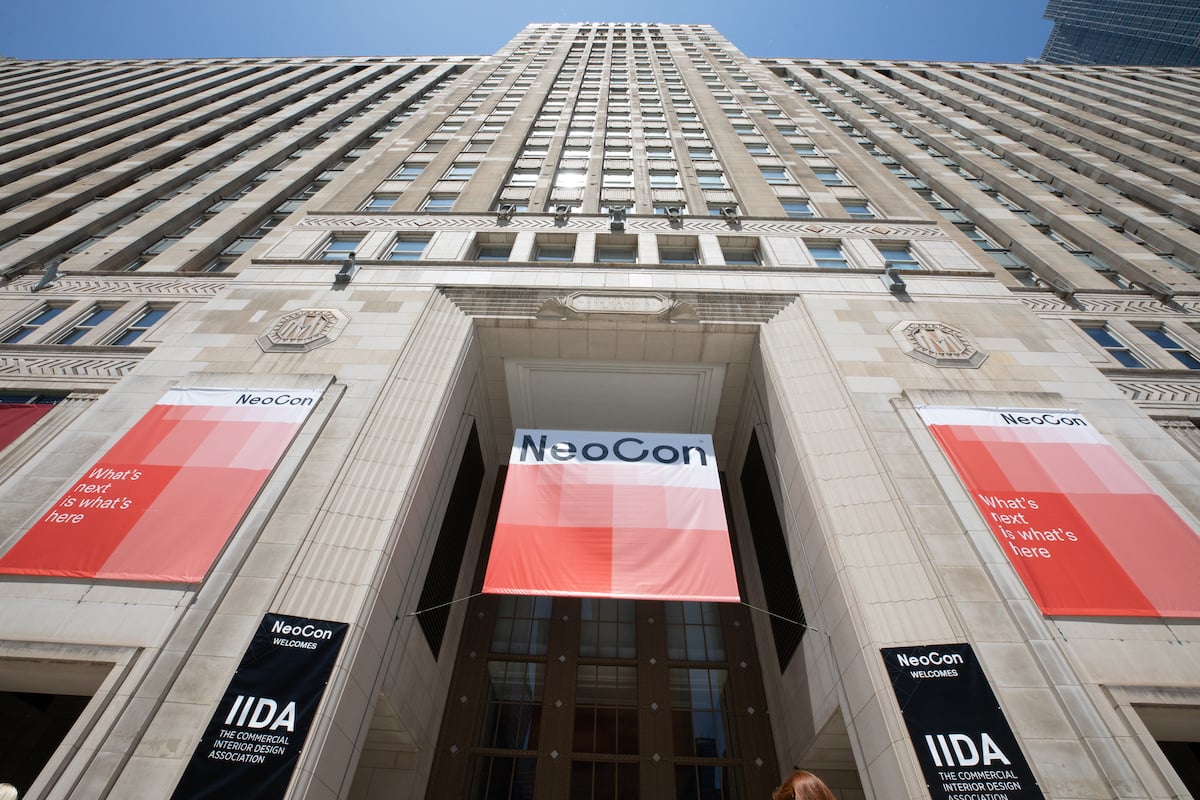
Today, it seems everything is moving faster. There’s more to do, and seemingly less time to do it. But what if technology could help? Thought provoking to be sure, but that’s just what ThinkLab is seeking to do with the help of a group of forward-thinking participating sponsors including Keilhauer, Mannington Commercial, DesignTex, DIRTT, Janus et Cie, Koroseal, Clarus, and Lutron.
As part of ThinkLab’s current design hackathon, focused on product specification in the phygital era, ThinkLab invited expertise from outside of the industry to help us explore technology, automation and how WE, as members of the interiors industry, can and should respond.
Dr. Daniel Susskind is a professor, economist, best-selling author, and TEDx speaker (viewed more than 1.6 million times). But best of all, he has been studying The Future of The Professions and the impact of technology and AI for the better part of the past decade.
In a captivating hour with Dr. Susskind, he explored the future of the professions and the impact of technology and AI on the future of work, and more specifically the profession of architecture. Rest assured, architects, designers, and creators will still be the cornerstone of the interiors industry, but as Dr. Susskind said it, “I think the story is one of mass redeployment, a change in the sorts of roles that people have to perform and a change in the sorts of skills and capabilities that will be required to do those roles effectively. . . The problems [our profession] solve aren’t going away, but technology is transforming the way in which we solve those problems.”
Here are three key takeaways to inspire us to futureproof the profession of architecture, design, and the ecosystem that surrounds:
Recognize that transformation is already underway
Evolution is already underway across all professions, and not necessarily one entirely prompted by technology, but prompted indeed by a new era of access to information. Quoting from his book, The Future of the Professions, Susskind tells us about the print-based society, where in the past specialized knowledge lived within the minds of professionals, and was out of reach and therefore sought after from those who did not have that same body of knowledge. This was in a print-based information society.
Today we live in an internet-based data driven society, where access to ideas, practices, and learning of any kind is at the fingertips of anyone around the globe. This brings about a paradigm shift as specialized bodies of information no longer need to reside within the human mind exclusively, and in a very positive way they have expanded equity and access. “And so, I ask the question,” Dr. Susskind continued, “as we move from a print-based society to an internet society, might there be new ways of organizing professional work? Might there be new ways of solving all these problems that traditionally only very particular types of professionals have solved?”
Transformation 1: “The move away from bespoke services”
Dr. Susskind painted a picture of this shift: While truly bespoke, original, and expressive architecture and design is still of immense value, it is of immense value to an increasingly smaller sub-sector of society. For much of society, learning best practices from well executed designs and compiling them into more repeatable and formulaic patterns that address form and function is just fine.
Transformation 2: “The decomposition of professional work”
“Professional work is no longer a monolithic lump of stuff handled by particular types of people,” Susskind suggested. When looking at the tasks that go into a job, “[tech] displaces us from particular tasks and particular activities, but it also makes other tasks and other activities more valuable and more important for human beings to do.” If you look at the tasks alone and spread them out on the table, how many of them truly need to be done by a well-trained professional?
In our design hackathon, we are exploring product specification in the new digital era. As we apply the above concepts to our industry, consider the following prompts:
- How might we systematize and automate the routine parts of our jobs to create more space for creativity?
- How might we evolve the role of technology in the product specification process to self-serve options, freeing up our human capital to work on more complex areas of the project such as technical application and customization?
2. Choose your mindset (and choose wisely).
Dr. Susskind suggested that we are headed toward a wave of redeployment — not unemployment —but much hinges on mindset.
In our previous ThinkLab design hackathon, we shared the story of the smokejumpers of Man Gulch, a sad story about 12 elite firefighters who were caught in an impossible situation. The majority tried to outrun the fire. While two were lucky enough to succeed, the majority perished. One man, however, creatively adapted and found new ways to use his tools. He survived. Sadly, most of those who perished were found clinging to heavy tools that no longer served them (chainsaws can’t help you outrun a fire). It seems we have the same choice in mindset as the fires of change come raging at us. We can hold on to our old tools, attempt to outrun the fire, or we can rethink how to use the tools at hand.
Dr. Susskind suggested there are two key ways we can approach technology and how it can be implemented into the workforce. The first is to train people to compete with the systems and machines. This, however, seems like an unending loop as we know that machines learn exponentially faster than the human mind possibly can.
“The second strategy, which is very different, is instead to become a sort of person who can build these systems and machines, who is capable of designing and operating these increasingly capable systems,” Dr. Susskind explained as he quotes Patrick Winston: “There are lots of ways to be smart that aren’t smart like us.” Could we focus the work of the professional to the most critical thinking and creative parts of the work, and leave the routine, predictable, algorithmic tasks to technology to free up mental capital in the next wave of professions?
“The pandemic, if anything, means we need to pay more attention, rather than less attention, to these technological trends that it might have accelerated” Dr. Susskind continued.
In our first phase of the hackathon, we discovered that much of the pain across our ecosystem is early on in the design process, around product discovery. Automation and technology can create a huge opportunity to empower designers to specify, leveraging the best of physical space, digital tools, and, perhaps most importantly our human capital to create frictionless experiences.
We are continuing to explore how to embrace new mindsets in the product specification process, diving even deeper into the following topics:
- The future of reps (empowering the digitally enabled rep)
- The future of showrooms
- The future of libraries
- The future of events
- The future of product presentations
3. Recognize that the battle isn’t between the professional and technology, but rather the professional and their own mindset around technology.
Dr. Susskind left us with three key pieces of advice:
- Explore new skills and capabilities within our roles and industries.
- Gather as much data as we can to learn from how technology has and has not worked for the human experience to help inform the building, operating, and designing of these technology systems moving forward.
- Have a blank paper mindset. Challenge yourself (and your company) to think even bigger. We must look at not just how technology can make our lives easier or more efficient. We must look into the future as a clean slate, and explore without boundaries, all that is possible, and even that which is not, in order to truly embrace and find benefit in a human and artificial intelligence partnered workforce.
Dr. Susskind left us with this inspiring challenge:
“The problems our professions solve aren’t going away, but the technology is transforming the way in which we solve those problems.”
The traditional skills of professionals may or may not be those skills needed in the next wave of professional roles. Let us not be of the mindset of competing with technology or bounding its potential by only looking at potential human efficiencies, but let us be of that “blank sheet” mentality, and look toward the future of what is possible.
Follow our ThinkLab Design Hackathon for more emerging insights on the future of work.
Erica Waayenberg is the head of Research & Content Development for ThinkLab, the research division of SANDOW. At ThinkLab, we combine SANDOW Media’s incredible reach to the architecture and design community through brands like Interior Design Media, Metropolis, Luxe, and Material Bank with proven market research techniques to uncover relevant trends and opportunities for the design industry. Join in to explore what’s next at thinklab.design/join-in.



.jpg)